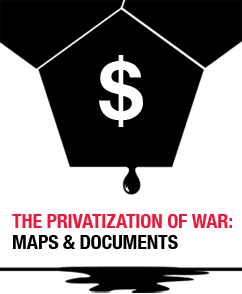In: Tribune
Sheila Cohen: Inspirational stories of workers’ struggles in the battle for workplace democracy
This collection has already received copious commendation, with compliments ranging from “a resource for comprehending the past and conceptualizing the future” to “a must-read for those seeking fresh ways out of the current global morass”.
Indeed, reports on remarkable grass-roots struggles in country after country flash before the eager reader like beacons of independent action. As editor Azzellini points out, such independent waves of struggle are all too often unrecognised. Yet they deserve full awareness by those committed to direct democracy and workplace opposition.
Inspiration is not hard to find in these pages. The Paris Commune is invoked as “’ council democracy’, while the crucial concept of “dual power” posed by this form of resistance is cited as an aspect of revolutionary struggles in Russia; Gramsci’s support for the factory council movement strengthens the case for connecting potentially revolutionary upheavals with such directly democratic structures.
So far, so impressive. One weak point, though, is the looseness and obscurity of the language. The dangerously value-laden concept of “workers’ control: is routinely used to cover actions and structures requiring more incisive analysis, failing to recognise the directly democratic organisational structures associated with such from-the-ground-up worker resistance.
In fact, in the first article we find the bewildering statement: “Direct democracy… offers little potential for participation or agency. Direct democracy operates within the framework of liberal democracy.” Well, structures of direct democracy are of course inevitably developed in the context of bourgeois regimes – but the potential of such subversive structures is surely the point here.
Azzelini’s own contribution, focussing on workplace occupations, comments that “in most cases the occupation was a means of struggle and not a step towards workers’ control”. Are such struggles thereby devalued? As Austrian workers’ leader Julius Dickmann wrote: “The council system takes hold of workers directly in their social role in the midst of their drudgery. The production process itself ensures the workers’ firm cohesion.”
By contrast, the account of the structures of workers’ participation in potentially revolutionary Chile conveys a strong sense of powerlessness. While the Unidad Popular party supported “worker participation”, the regime’s “institutional framework” rendered any attempts at genuine direct democracy impossible. Nevertheless, there are exciting descriptions of self-organisation in Santiago’s cordones industrials, invoking sad reflection on what could have been.
While the 1960s and early ’70s saw (in Britain, America and western Europe) “autonomous struggles” in which “strikes and other protest movements emerged… increasingly organized outside the trade union movement and alien to… official institutions…”, ironically such struggles appear to have inspired ‘new strategies’ by employers including Toyotist “participation”…working in teams…”
Mexico looks more hopeful: “300… occupied and self-managed workplaces… remain open and functioning as worker-controlled co-operative”. The writer here cites “radical governments in Venezuala and Ecuador… [where] self-managed cooperatives are very much at the centre of attempts … to make another world possible…” Much of this argument cites the dissident “Co-ordinator of Education Workers” a tendency which has “broken with”the official teachers’ union to organise general strikes and occupations. And not only teachers; Honda workers are described as seeking ‘their own independent union’ in opposition to the pro-company Congress of Mexican Workers.
Next stop is Uruguay, where yet more “recuperations” are cited as “reactivat[ing] … mechanisms of resistance”; it’s also acknowledged, rightly, that “the fact that these collective actions were inspired by defensive [rather] than offensive reasons did not stop them from becoming intense experiences that led to deep subjective transformations.” This recognises that “devices of direct democracy… [themselves] generate new practices and subjectivities”, and, crucially, that such actions “are not born from a utopian dream … [but] from the workers’ simple need to defend their jobs and their means of survival”.
The study of “the Commons” in Greece takes us back to a much earlier period; “workers’ participation” and workers’ councils are said to have operated in “the middle of the 19th century”, while ‘later examples include the factory councils… in the shoe and tobacco industries between 1920 and 1936”.
The tobacco workers’ union was, it seems, “among the most… well-organised and class-conscious… They put together informal shop-floor committees directly elected by workers.” Yet the conclusions are perhaps over-optimistic; one typical “prefigurative experiment “ christened Micropolis, was essentially a “radical” move by mainly middle-class young people.
One overriding problem with this valuable collection is that the largely non-English-speaking contributors deserve better than the “literal” translation we have here. One ubiquitous example is the use of the term “recuperations” to refer to both direct actions like occupations and more “political” policies involving state intervention. Even the British contribution offers pompous long-windedness in a collection which should be open to working-class activts. Take on more editors, Zed Press.
Links zu diesem Artikel:























